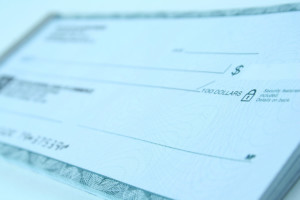History of Check Fraud

As long as there have been checks, there has been check fraud. Fraudsters have forged checks, impersonated account holders to cash checks, stolen checks, tricked people into giving them checks, and committed countless other types of fraud. Banks have been fighting check fraud for hundreds of years, and the struggle continues.
To get a sense of the types of fraud that may have taken place through the years, review this brief history of checks and check fraud.
The Origins of the Check
Humans started using financial tools similar to checks about 2,000 years ago. Ancient Romans used prescriptions, Ancient Indians used adeshas, and Ancient Persians used letters of credit. So they didn’t have to carry heavy bags of coins or risk being robbed, Arab traders invented the sakk, a paper document that allowed them to deposit money in a bank in one country and then withdraw the funds in another country.
As they dealt with Arab traders, Europeans were inspired to adopt these practices, and over the next few centuries, the modern check was born. In the 1500s, cashiers in the Dutch Republic accepted deposits for a fee, and they also paid out money to anyone with a note from the depositor. During the next few hundred years, this practice spread throughout Europe, but because the notes were all handwritten, fraud was rife. Many areas even banned this form of payment.
The First Modern Day Checks
In 1717, the modern check was born when the Bank of England began using pre-printed forms for these withdrawals. The forms were numbered and printed on check paper so that the bank could easily “check” for issues or inaccuracies. At that point, account holders had to go to the bank and have a cashier issue the check paper. Then, after they paid the check to someone, that person could return to the bank to retrieve the funds. This setup was expressly designed to minimize fraud.
The very young United States quickly followed suit and began using checks in 1784 at the Bank of New York. Arguably, the Commercial Bank of Scotland created the first personalized checks in 1811 by printing its customers’ names on the side of the check. About 20 years later, the Bank of England began printing and binding check books for its customers. Again, by putting more information on the checks, the banks hoped to reduce fraudulent transactions.
Keep in mind that during this time period, paper money was not very popular. The United States didn’t start printing paper notes until after the Civil War, and in the United Kingdom, generally only the upper-class elite used paper money until after the First World War. In this climate, checks helped to make business possible.
Fighting Check Fraud through Laws and Auditing
As checks became more popular, fraud increased. Governments created laws such as the Bills of Exchange Act 1882 in the United Kingdom and the Negotiable Instruments Act 1881 in India. At the same time, banks strived to create technologies to minimize bank fraud.
During this time, banks could only cash checks by sending porters to the other bank from where the funds had been drawn. Eventually, this process became too time consuming and inefficient, and bankers developed clearing houses so that they could cash their checks in a central location.
The clearing process took so long that it increased the risk of checks not being paid. In this era, when an account holder deposited a check, the teller stamped the deposit slip and made notes on when the funds would be available. Every morning, banks received returned checks from the Federal Reserve. Then, bank auditors looked for trends with the returned checks and the deposit slips, and they tried to identify kiting schemes.
The Invention of MICR
In 1959, Magnetic Ink Character Recognition (MICR) was patented and used on checks. This magnetic ink made automatic sorting possible and decreased the amount of time required for a check to clear. Over the next three or four decades, checks rose to their highest level of popularity.
This ink also created another layer of fraud protection — bankers could make sure that the check numbers were printed with this ink and that they matched the rest of the information on the check. Eventually, however, some thieves began buying MICR printers, making their scams even more effective.
Check Fraud in the Modern Day
After their peak in the 1990s, checks began to be replaced by electronic forms of payment. However, as of 2019, people still use checks. Roughly 15% of people use checks on a regular basis, and about 3% of people think checks are the best way to pay.
Many people now use electronic checks, and the implementation of the Check Clearing Act for the 21st Century increased processing time by allowing banks to use substitute checks rather than paper checks.
Check Fraud Security Solutions
However, with every advancement in technology, scam artists adapt their techniques and find new ways to commit fraud. To protect your financial institution, you need a fraud protection partner that is nimble and flexible. At SQN Banking Systems, we have the products, services, and solutions you need — contact us today.
